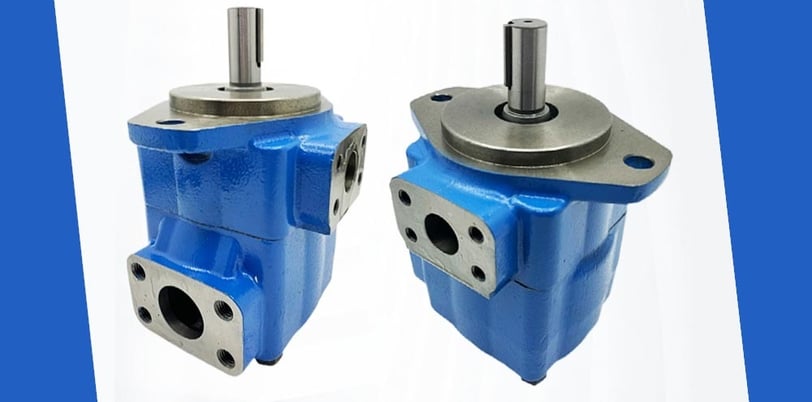Maintenance Tips for Vickers 20VQ 25V Shears Rotary Vane Pump: A Practical Guide to Extending the Life of Hydraulic Pumps
1/9/20252 min baca


Introduction to Rotary Vane Pumps
Rotary vane pumps, such as the Vickers 20VQ and 25V, are essential components in hydraulic systems. They provide efficient fluid transfer by using a series of vanes that slide in and out of a rotor. Proper maintenance of these pumps is crucial for ensuring their longevity and operational efficiency. This guide aims to provide practical maintenance tips to help you take care of your rotary vane pump.
Regular Inspection and Cleaning
One of the most effective maintenance practices for prolonging the life of your Vickers rotary vane pump is to perform regular inspections. Begin by checking for any noticeable leaks, unusual noises, or vibrations that could indicate mechanical issues. Additionally, keep an eye on the pump's operational parameters such as pressure and flow rates.
Cleaning is also an essential part of maintenance. Make sure to clean any dirt, debris, or contaminants that may accumulate on the pump. This can prevent unwanted wear and tear on the internal components. Use a soft cloth and non-abrasive cleaner to gently wipe down the exterior of the pump.
Fluid Quality and Filtration
The hydraulic fluid used in your Vickers 20VQ or 25V pump plays a critical role in its performance and lifespan. Always use the recommended hydraulic fluid for your specific pump model. Moreover, take the time to regularly check the fluid quality, looking for any signs of contamination such as discoloration or particulates.
A filtration system is also instrumental in maintaining the fluid quality. Implementing an appropriate filter can help to keep contaminants out of your hydraulic system, thereby extending the life of your rotary vane pump. Make sure to replace filters as recommended by the manufacturer and consider installing a return line filter if one is not already in place.
Monitoring Operating Conditions
Monitoring the operating conditions of your rotary vane pump is vital for preventing premature failure. Keep track of the temperature and pressure levels, as excessive heat can lead to fluid breakdown and increased wear on pump components. It’s beneficial to have temperature and pressure gauges installed, if not already present, to help manage these parameters.
Additionally, avoid overloading the pump by adhering to its rated specifications. Each model, including the Vickers 20VQ and 25V, has specific limits for flow rates and pressures. Ignoring these limits can lead to inefficiencies and damage that may necessitate costly repairs.
Conclusion
In summary, maintaining your Vickers 20VQ or 25V rotary vane pump involves regular inspections, cleaning, monitoring fluid quality, and ensuring appropriate operating conditions. By following these tips, you can help maximize the pump's performance and extend its lifespan. Incorporating a proactive maintenance approach not only saves money by preventing costly downtime but also enhances the productivity of your hydraulic systems.
